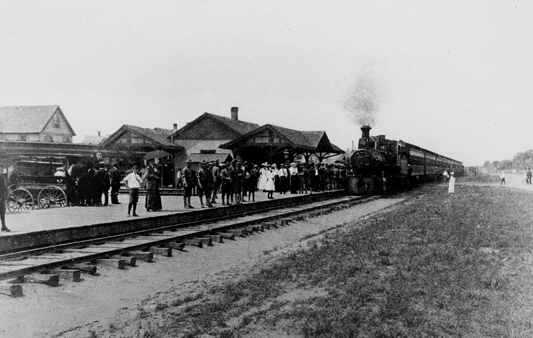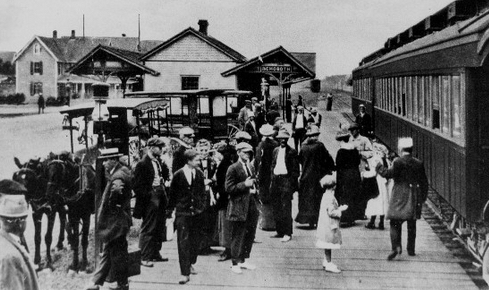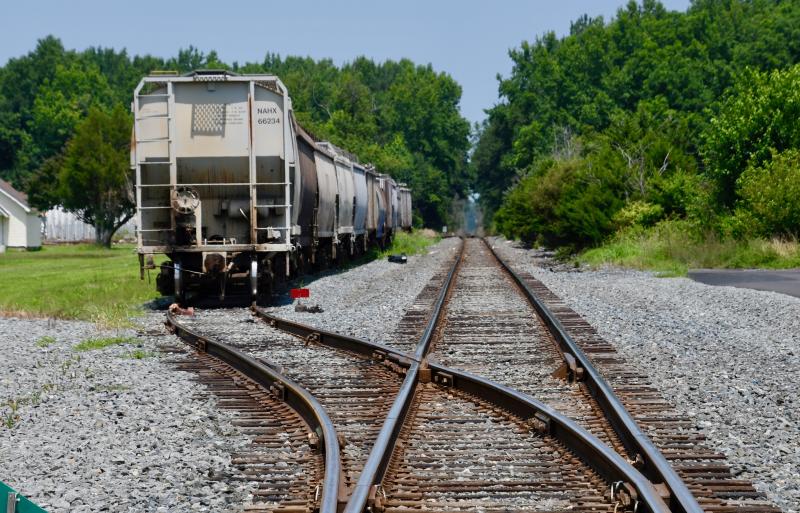Railroads brought prosperity to much of Sussex County
There is so much railroad history in Sussex County that it is impossible to even touch the surface in one column. The railroad was crucial to the county's economy, and from the mid- to-late 1800s and into the early 1900s, it was the only mode of transportation out of the area. Before the railroads, people rarely traveled more than a few miles from their home.
The impact of the railroad was monumental and opened up big-city markets to Sussex farmers. The railroad also spurred new businesses such as canning factories.
Although only a few remnants of that fascinating history exist today, railroads connected nearly every city and town in the county. It's almost a lost history, but thanks to groups like the Lewes Junction Railroad & Bridge Association, and historians like Jim Bowden and authors like Douglass Poore, that history is being kept alive.
Over the years, railroads have been bought and sold, changed their names and gone bankrupt, so it takes a playbook to understand the family tree of railroading in Sussex County. And many small railroads made connections to larger rail lines.
Consider this: The Junction & Breakwater Railroad to Lewes and Rehoboth Beach was purchased by the Philadelphia, Wilmington and Baltimore Railroad and merged with the Breakwater and Frankford and Worcester Railroad to become the Delaware, Maryland and Virginia Railroad. For a time, the tracks were used by the Queen Anne's Railroad and eventually purchased by the Pennsylvania Railroad.
Got that straight? The history of railroads in the county is convoluted for sure.
So instead of getting into the complexity of that, here are just a few snippets of Sussex railroad history.
Still on track
Even though most of the existing rail lines in eastern Sussex have been converted to trails, there is still freight being shipped on the remaining lines in the eastern part of the county by the Delaware Coast Line Railroad based in Georgetown.
The 7-mile line from Ellendale to Milton and the 18-mile line from Georgetown to Lewes were purchased by the state of Delaware to preserve the right of way. Delaware Coast has had a contract since 1982 with the state to use the rails.
Junction & Breakwater
The Junction & Breakwater Railroad dates back to 1857. The 38-mile line, with a junction to the Delaware Railroad in Harrington, continued on to the Delaware Breakwater, and a Georgetown-to-Lewes spur was added in 1870, with stations at each end as well as stations in Cool Spring, Harbeson (later called Broadkill) and Nassau. The line opened up the rural area to commerce for the first time, and moved freight and passengers until the mid-20th century. The line was terminated in 1949.
The line is now the Junction & Breakwater Trail linking Lewes, Cape Henlopen State Park and Rehoboth Beach.
A large section of the Lewes-to-Georgetown rail line was abandoned by the state and the rails were removed to make way for the Lewes-to-Georgetown Trail, which now extends from Lewes to Fisher Road outside Lewes. Most of the remaining trail will be constructed beside an active rail line.
The line had a rail crossing over the Lewes-Rehoboth Canal. The crossing of the canal was a hand-cranked swing bridge that was in operation for more than 100 years until it was removed on Feb. 15, 2022. When the bridge base was found to be compromised by the swift canal current, state transportation officials decided to close it and had plans to scrap the historic bridge.
That was before the Lewes Junction Railroad & Bridge Association – formed in 2019 – stepped in to start a campaign to save the bridge. Thanks to their efforts in collaboration with the City of Lewes and DelDOT, the bridge was saved and moved to a permanent display site less than one-half mile from the canal on American Legion Road in Lewes.
The last train trip in Lewes took place on Dec. 15, 2017.
Queen Anne's Railroad
Queen Anne's Railroad, which began service between Queenstown, Md., and Lewes in 1894, extended service to Love Point, Md., in 1902. The railroad changed hands and was part of the Maryland, Delaware and Virginia Railway Co. in 1905 and then consolidated to form the Baltimore and Eastern Railroad in 1923.
The Milton-to-Lewes line was adjacent to Savannah Road and also crossed the Lewes-Rehoboth Canal near where the Lewes Little League Park is today, ending at a pier near Savannah Beach. It crossed Pilottown Road where Queen Anne Avenue is today.
As automobiles and trucks became popular on the Eastern Shore, passenger service on the B&E was discontinued in October 1931. The construction of what is now Route 113 in 1916 led to a slow and steady decline of the railroads.
On the Queen Anne's Railroad, it was possible – using a ferry – to travel from Lewes to Love Point, Md., and board a ferry to Baltimore. The railroad also offered a connection to Cape May, N.J., via ferry. Future plans for the railroad included a line to Rehoboth Beach, but financial problems forced the railroad to go bankrupt in 1904.
But that wasn't the end of Queen Anne's Railroad. The Queen Anne's Royal Zephyr dinner train operated out of a small depot off Kings Highway in Lewes, offering rides to Harbeson and back. The dinner and murder mystery train was a popular tourist attraction for nearly a decade in the 1990s.
Queen Anne’s was one of the few east-west lines crossing Sussex County south of Milford and north of Georgetown, going through Greenwood and Ellendale and crossing the canal in Lewes.
Tracks in Rehoboth Beach
It's hard to believe that train tracks ran the length of Rehoboth Avenue almost to the Boardwalk in Rehoboth Beach. It was the railroad that put the beach resort on the map, transporting tourists from Wilmington and Philadelphia.
The Delaware, Maryland and Virginia Railroad used the existing Queen Anne's Railroad tracks to reach the beach. It was such a popular destination that the railroad converted an old building near the shoreline to a welcome center in 1899, but not just any welcome center. The building included accommodations for 1,000 tourists, a dance hall, bowling alley, 100 bathhouses, shuffleboard and electric lights.
Here's what I can't confirm. Was that building the same as the famous Horn's Pavilion along the beach? It was built around the same time in 1899 and was the place to be in Rehoboth until it was destroyed in a 1914 storm.
But there is more to the story. The railroad had plans for a rail line along the coast connecting Rehoboth to Lewes, passing by the Great Dune and the Cape Henlopen Lighthouse. The line never materialized because the company went bankrupt.
Seaford station in service
Although many train stations in Sussex County have either been torn down or converted to other uses, the Seaford station remains in business on the shores of the Nanticoke River near a railroad bridge.
Built in 1856, and rebuilt after a fire in 1902, the station was a key stop on the Delaware Railroad from New Castle to the southern border of the state. When the first train came to Seaford on the line in 1856, nearly the entire town turned out to celebrate. At Seaford, travelers could board a steamship that sailed down the Nanticoke River to ports on Chesapeake Bay.
In 1884, the rail line was expanded to Cape Charles, Va., to provide a closer connection to ports on the bay.
That line is still in use today to transport freight. The last passengers rode the train in 1965.
It’s safe to say that Seaford probably benefited the most from the railroad. It set off a chain reaction of unprecedented growth in the town and was a major factor in the DuPont Co. selecting Seaford for its first nylon plant in 1939.
In two weeks, read more about railroading in Sussex County, including the history of existing stations and the Milton-to-Ellendale rail line.
























































